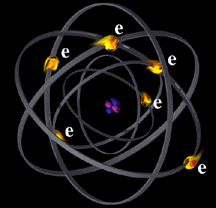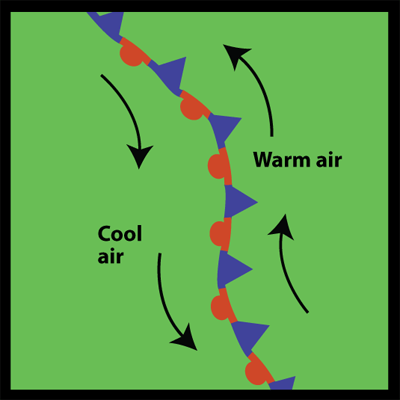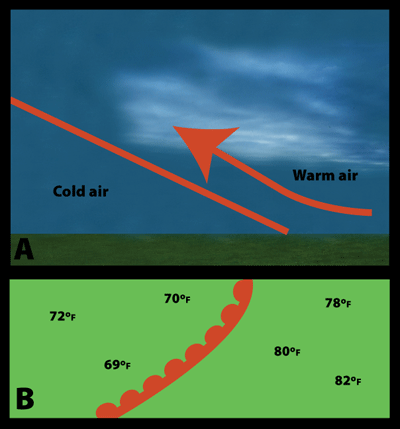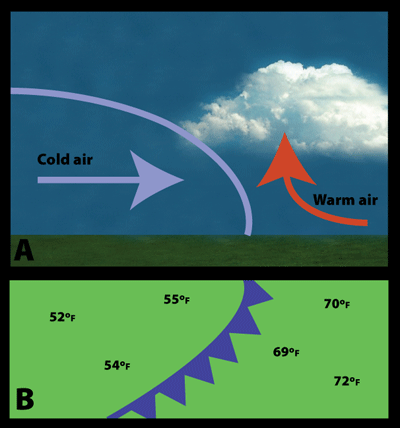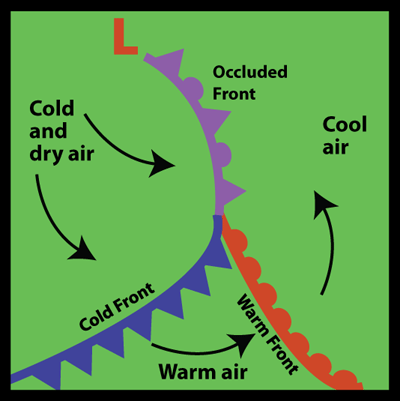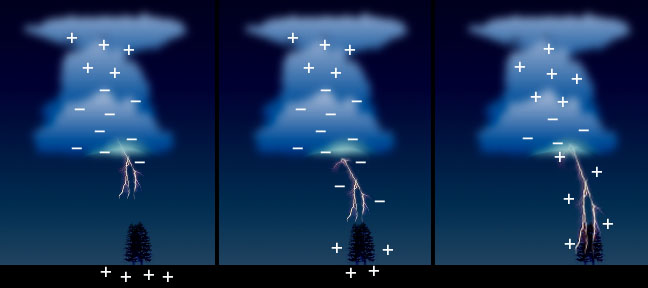
The sky is filled with electric charge. In a calm sky, the positive and negative charges are evenly interspersed thoughout the atmosphere. Therefore, a calm sky has a neutral charge.
Inside a thunderstorm, electric charge is spread out differently. A thunderstorm consists of ice crystals and hailstones. The ice crystals have a positive charge, while the hailstones have a negative charge. The positively charged ice crystals are pushed to the top of the thunderstorm cloud by an updraft. Meanwhile, the heavy negatively charged hailstones are pushed to the bottom of the thunderstorm by its downdraft. Thus, the thunderstorm's positive and negative charges are separated into two levels: the positive charge at the top and the negative charge at the bottom.
During a thunderstorm, the Earth's surface has a net positive charge. Because opposites attract, the negative charge at the bottom of the thunder cloud wants to link up with the positive charge of the Earth's surface.
Once the negative charge at the bottom of the cloud gets large enough to overcome air resistance, a flow of negative charge rushes toward the earth. This is known as a stepped leader. The positive charges of the Earth are attracted to this stepped leader, so a flow of positive charge moves up through some elevated point, such as a tree or a telephone pole, and into the air. When the stepped leader and the positive charge from the earth meet, a strong electric current carries positive charge up into the cloud. This electric current is known as the return stroke of lightning and is visible to the human eye. The above process will occur three or four times, all within a few seconds. Normally the human eye cannot distinguish between all of the return strokes. Back to
Thunder and Lightning
Back to
Thunder and Lightning





